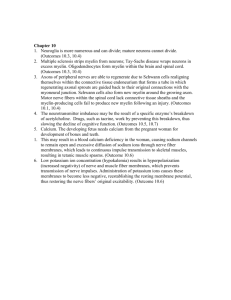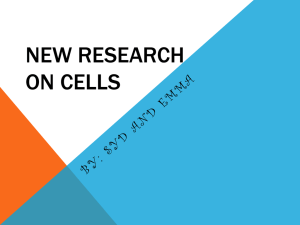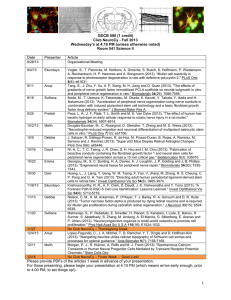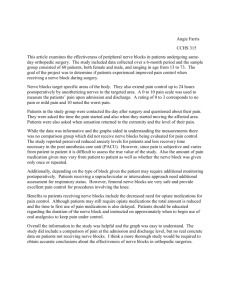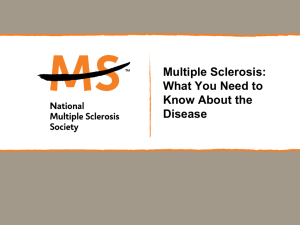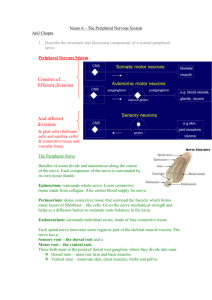ENGINEERING PERIPHERAL NERVE USING PARALLEL
advertisement
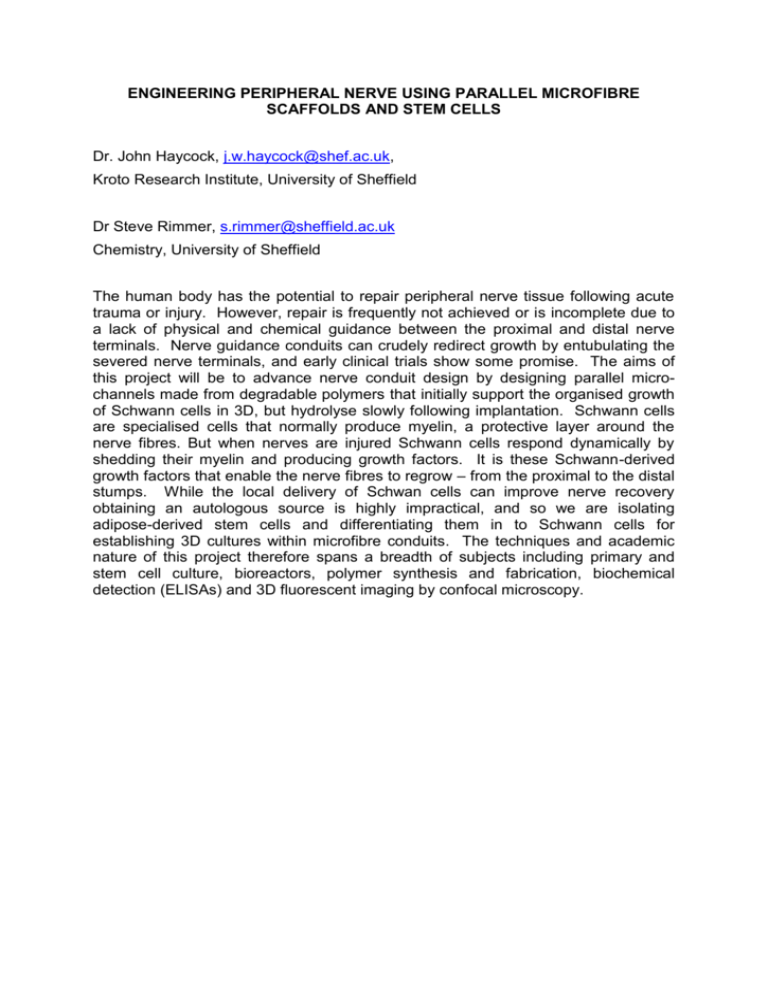
ENGINEERING PERIPHERAL NERVE USING PARALLEL MICROFIBRE SCAFFOLDS AND STEM CELLS Dr. John Haycock, j.w.haycock@shef.ac.uk, Kroto Research Institute, University of Sheffield Dr Steve Rimmer, s.rimmer@sheffield.ac.uk Chemistry, University of Sheffield The human body has the potential to repair peripheral nerve tissue following acute trauma or injury. However, repair is frequently not achieved or is incomplete due to a lack of physical and chemical guidance between the proximal and distal nerve terminals. Nerve guidance conduits can crudely redirect growth by entubulating the severed nerve terminals, and early clinical trials show some promise. The aims of this project will be to advance nerve conduit design by designing parallel microchannels made from degradable polymers that initially support the organised growth of Schwann cells in 3D, but hydrolyse slowly following implantation. Schwann cells are specialised cells that normally produce myelin, a protective layer around the nerve fibres. But when nerves are injured Schwann cells respond dynamically by shedding their myelin and producing growth factors. It is these Schwann-derived growth factors that enable the nerve fibres to regrow – from the proximal to the distal stumps. While the local delivery of Schwan cells can improve nerve recovery obtaining an autologous source is highly impractical, and so we are isolating adipose-derived stem cells and differentiating them in to Schwann cells for establishing 3D cultures within microfibre conduits. The techniques and academic nature of this project therefore spans a breadth of subjects including primary and stem cell culture, bioreactors, polymer synthesis and fabrication, biochemical detection (ELISAs) and 3D fluorescent imaging by confocal microscopy.

